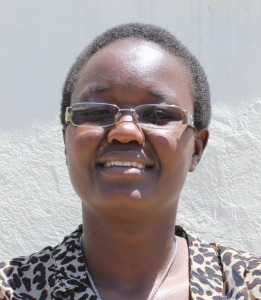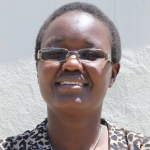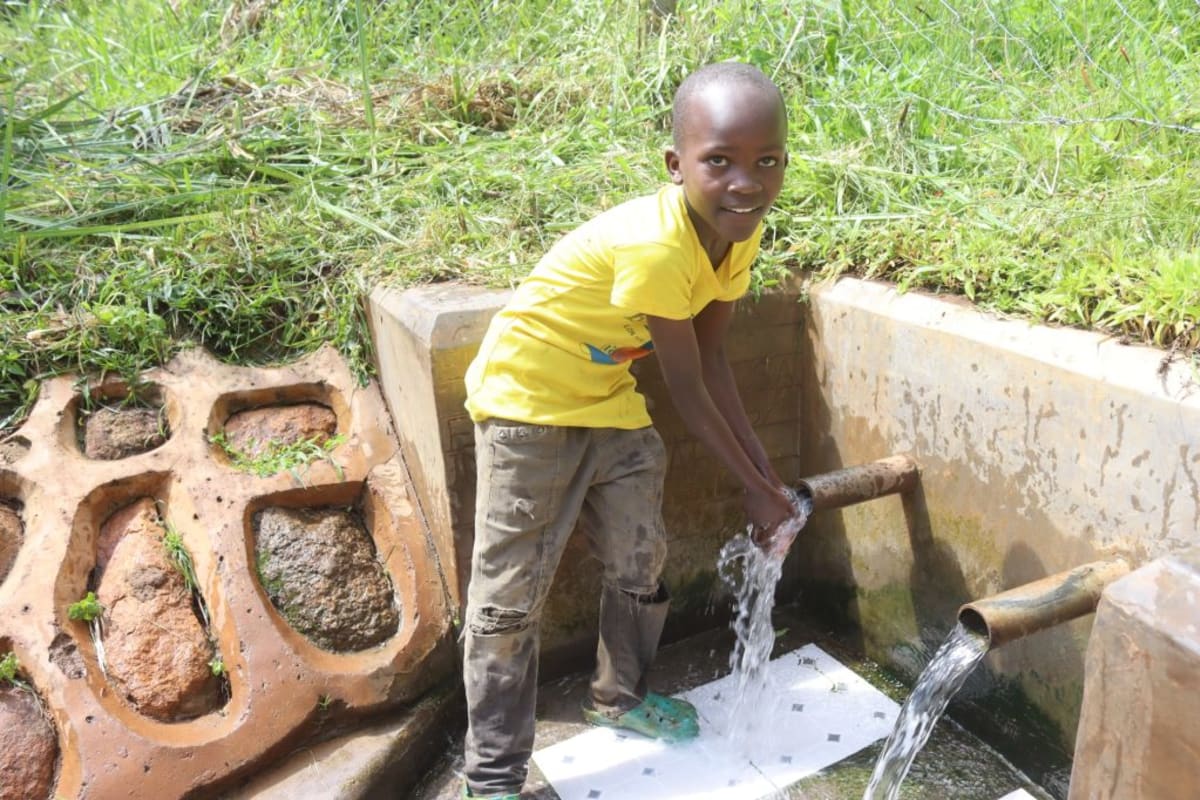The Shaban Maikuva spring in Mulwanda was protected 19 years ago by a well-meaning contributor. After many years of service to the 350 people of this community, sadly, the original structure can no longer be trusted and needs to be redone. It has shifted, making the water contaminated, and the movement of the structure from its previous position means valuable water is escaping below ground.
Congestion at the spring is now a constant issue because the water flows more slowly due to the corroding drawing point pipe, which is rusty. The spring bottom where water collection containers sit is crumbling, filled with water and uneven. Community members wake up at 6 am to avoid the long queues and falsely believe that the water fetched early in the morning is safer to drink.
Unfortunately, becoming ill by drinking contaminated water from the spring has become common. Community members are spending a lot of time and money visiting the hospital to treat amoebas and persistent coughing. That is time and money that could make developments in their community instead.
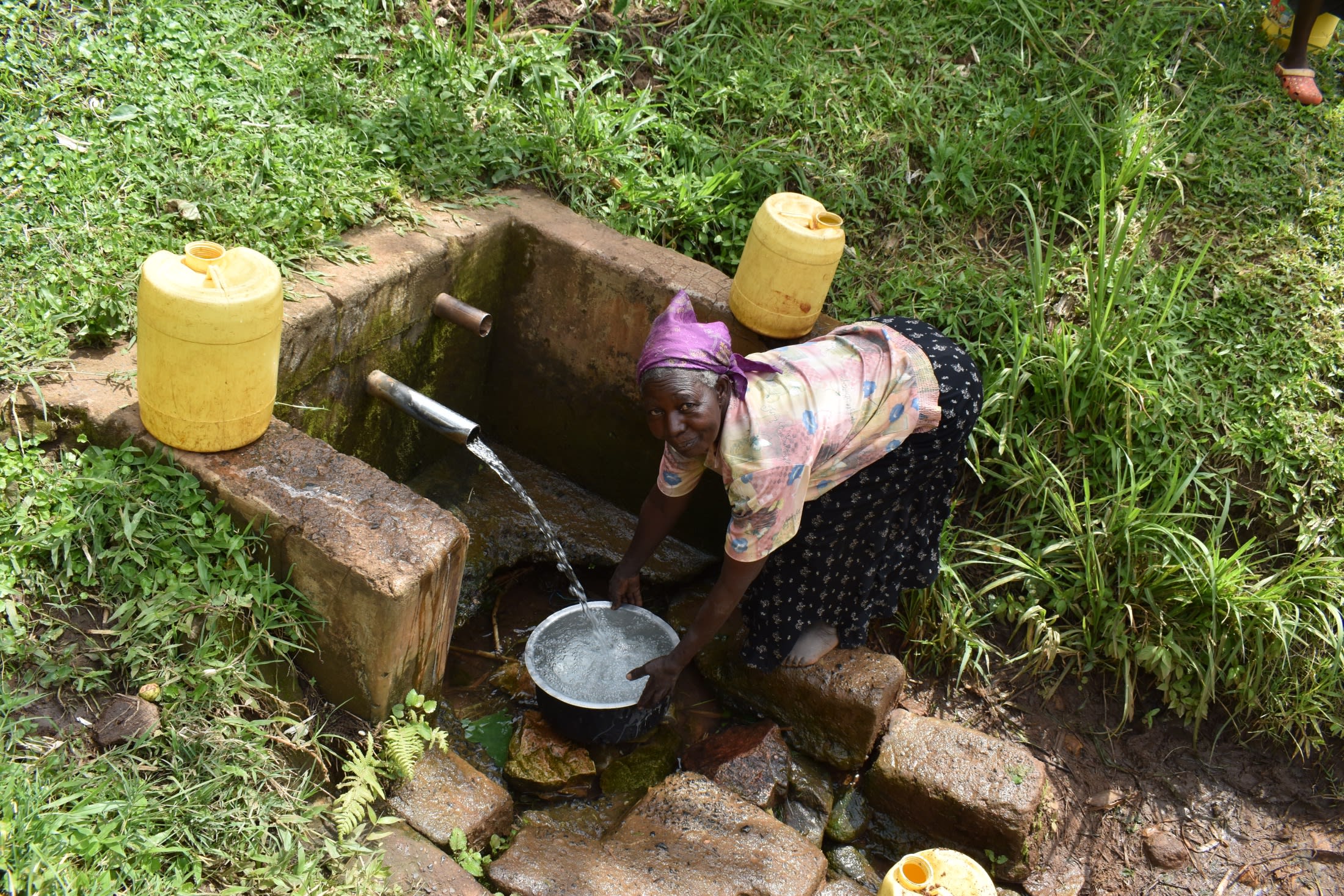
Mrs. Fridah Kasiro Wandundu, a 67-year-old grandmother from the community, commented, "My family has suffered a lot. I have wasted a lot of money buying cough syrups because [for] each of my grandchildren cough syrup is needed. My hope is that the spring will be protected, and my grandchildren will be safe. I hope they will live a healthy life and at the same time enjoy [the] freedom of fetching water without the fear of falling and injuring themselves."
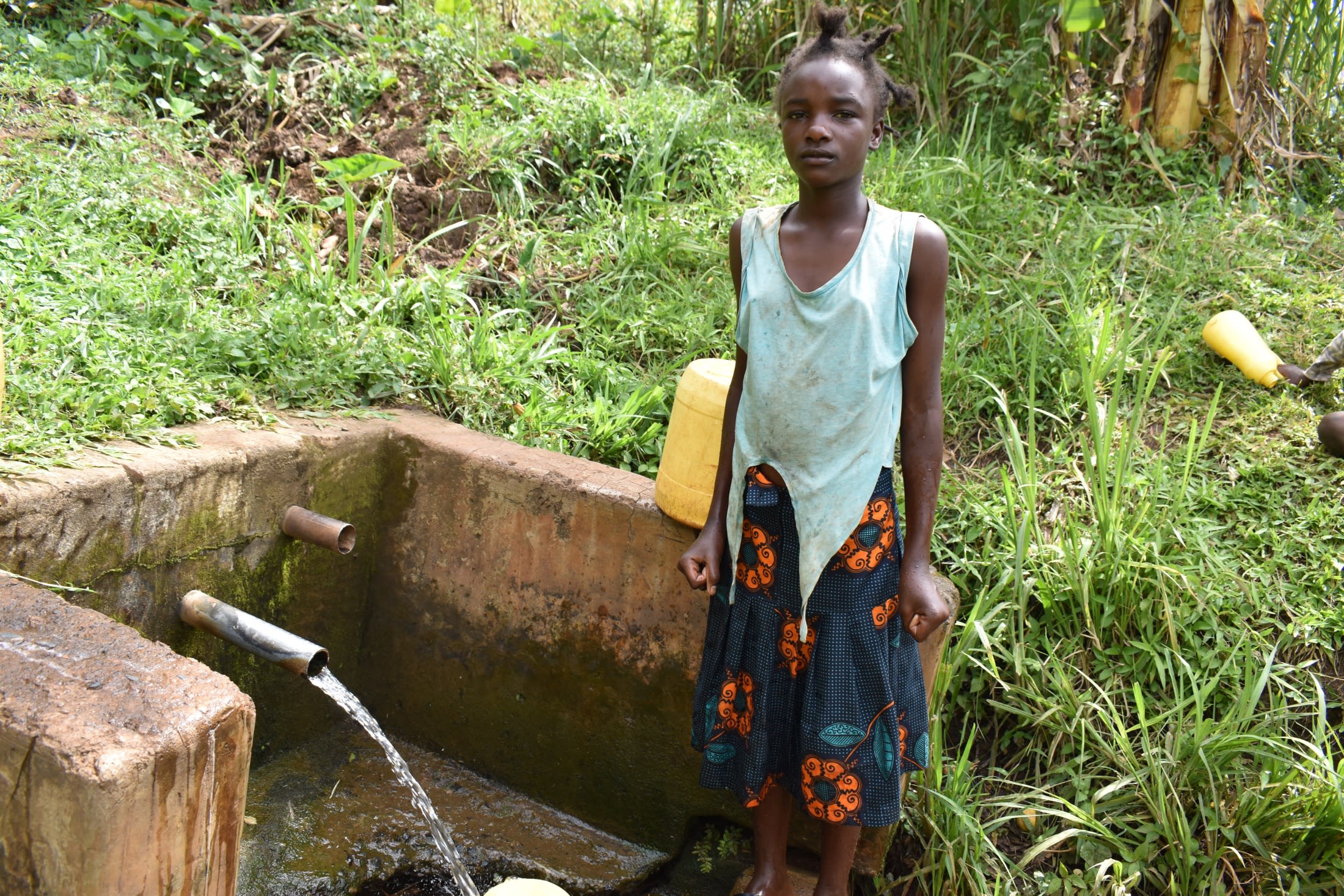
"The water from the spring has made me have flu all the time. This sometimes makes me miss school because I fear coughing all the time before the teacher and my fellow classmates. I prefer staying back home until my flu subsides," said Tracy M., age 10.
Protecting the spring will guarantee community members comfortable, quick access to the spring for many years to come. The flowing water will once again be clean and safe for consumption. Families will stay healthy and safe from the risk of accidents at the spring and be able to improve their daily lives.
What We Can Do:
Spring Protection
Protecting the spring will help provide access to cleaner and safer water and reduce the time people have to spend to fetch it. Construction will keep surface runoff and other contaminants out of the water. With the community's high involvement in the process, there should be a good sense of responsibility and ownership for the new clean water source.
Fetching water is a task predominantly carried out by women and young girls. Protecting the spring and offering training and support will, therefore, help empower the female members of the community by freeing up more of their time and energy to engage and invest in income-generating activities and their education.
Training on Health, Hygiene, COVID-19, and More
To hold trainings during the pandemic, we work closely with both community leaders and the local government to approve small groups to attend training. We ask community leaders to invite a select yet representative group of people to attend training who will then act as ambassadors to the rest of the community to share what they learn. We also communicate our expectations of physical distancing and wearing masks for all who choose to attend.
The training will focus on improved hygiene, health, and sanitation habits in this community. We will also have a dedicated session on COVID-19 symptoms, transmission routes, and prevention best practices.
With the community's input, we will identify key leverage points where they can alter their practices at the personal, household, and community levels to affect change. This training will help to ensure participants have the knowledge they need about healthy practices and their importance to make the most of their water point as soon as water is flowing.
Our team of facilitators will use a variety of methods to train community members. Some of these methods include participatory hygiene and sanitation transformation, asset-based community development, group discussions, handouts, and demonstrations at the spring.
One of the most important issues we plan to cover is the handling, storage, and treatment of water. Having a clean water source will be extremely helpful, but it is useless if water gets contaminated by the time it is consumed. We and the community strongly believe that all of these components will work together to improve living standards here, which will help to unlock the potential for these community members to live better, healthier lives.
We will then conduct a small series of follow-up trainings before transitioning to our regularly scheduled support visits throughout the year.
Training will result in the formation of a water user committee, elected by their peers, that will oversee the operations and maintenance of the spring. The committee will enforce proper behavior around the spring and delegate tasks that will help preserve the site, such as building a fence and digging proper drainage channels. The fence will keep out destructive animals and unwanted waste, and the drainage will keep the area's mosquito population at a minimum.

 Protected Spring
Protected Spring
 Rehabilitation Project
Rehabilitation Project










